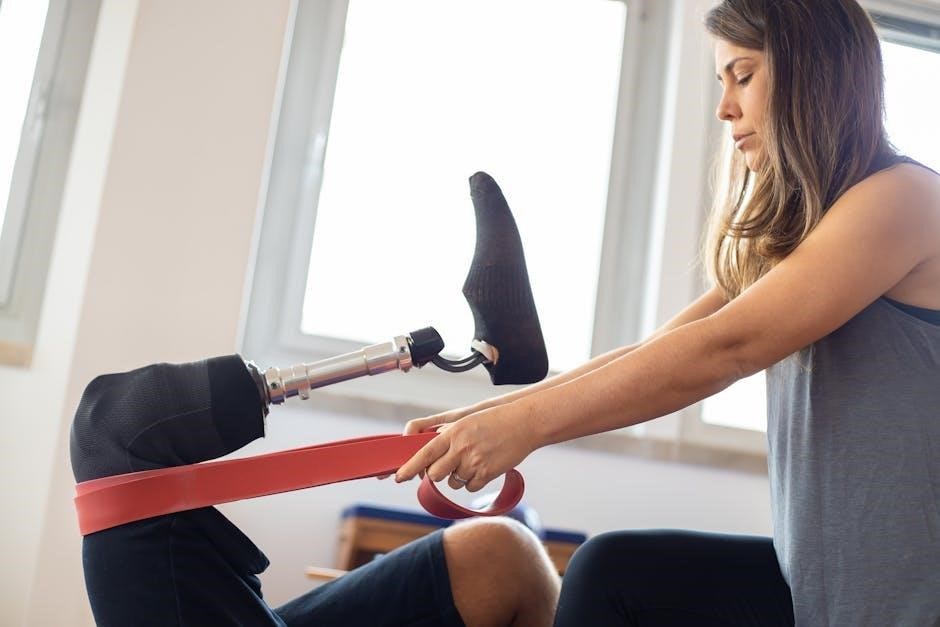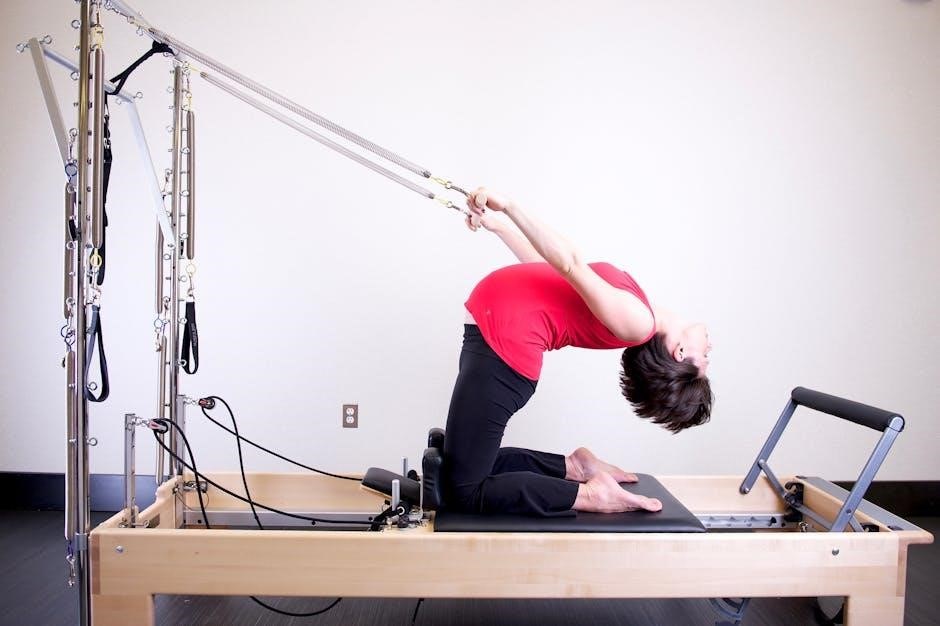Tibia fracture physiotherapy exercises are crucial for recovery, with protocols guiding post-surgical rehabilitation, including exercises and goals, as outlined in rehabilitation guidelines and pdf resources available online for physical therapists and patients alike always.
Overview of Tibia Fracture Rehabilitation
Tibia fracture rehabilitation is a complex process that involves a combination of physical therapy, exercises, and patient education. The goal of rehabilitation is to restore function, strength, and mobility to the affected limb, and to promote overall recovery and well-being. According to various online resources, including pdf guides, tibia fracture rehabilitation typically involves a phased approach, with each phase building on the previous one to progressively increase strength, range of motion, and functional ability. A thorough understanding of the rehabilitation process is essential for physical therapists, healthcare professionals, and patients alike, as it enables them to work together to achieve optimal outcomes and minimize the risk of complications. By following a well-structured rehabilitation program, individuals with tibia fractures can expect to make significant progress and achieve a full recovery, with many resources available online to support this process, including comprehensive guides and pdf documents.

Classification of Tibial Shaft Fracture
Fracture classification is based on location and orientation, guiding treatment and rehabilitation, with online resources and pdfs providing detailed information on classification systems and their applications in clinical practice always used correctly.
Importance of Classification in Rehabilitation
The classification of tibial shaft fractures plays a crucial role in rehabilitation, as it helps determine the most effective treatment plan and physiotherapy exercises. Accurate classification ensures that patients receive personalized care, taking into account the specific characteristics of their fracture. This, in turn, enables physical therapists to design targeted rehabilitation programs, addressing the unique needs of each patient. By considering the location, orientation, and severity of the fracture, therapists can develop exercises that promote optimal healing, minimize complications, and facilitate a speedy recovery. Online resources, including pdfs, provide valuable information on fracture classification and its implications for rehabilitation, helping therapists stay up-to-date with the latest developments in the field. Effective classification and rehabilitation can significantly improve patient outcomes, reducing the risk of long-term disability and enabling individuals to regain their full range of motion and functional ability. Overall, the importance of classification in rehabilitation cannot be overstated, as it lays the foundation for a successful and tailored treatment approach. With the right classification and rehabilitation strategy, patients can expect a more positive prognosis and a faster return to their normal activities.

Post-Surgical Rehabilitation Protocol
Rehabilitation protocols guide post-surgical care, including exercises, to ensure proper healing and recovery from tibia fractures, with online resources available for therapists and patients to access and follow accurately always using pdf guides.
Guidelines for Rehabilitation Exercises
Rehabilitation exercises for tibia fractures are crucial for a successful recovery, and guidelines are available to ensure that patients and therapists follow a structured approach. These guidelines typically include a range of exercises and activities that are designed to promote healing, improve mobility, and restore strength and function to the affected area. The exercises may be modified or progressed based on the individual’s progress and any complications that may arise. It is essential to follow these guidelines carefully to ensure that the rehabilitation process is effective and safe. Online resources, including pdf guides, are available to provide detailed information on rehabilitation exercises and protocols. By following these guidelines and working with a qualified therapist, patients can expect to make a full recovery from their tibia fracture and return to their normal activities. Rehabilitation exercises play a critical role in the recovery process, and guidelines help to ensure that patients receive the best possible care. Effective rehabilitation requires a comprehensive approach that includes exercise, education, and support.

Initial Exercises for Tibial Shaft Fracture Rehabilitation
Initial exercises focus on gentle movements and strengthening, with online resources and pdf guides providing detailed instructions for patients and therapists to follow during the rehabilitation process always and carefully.
Phase 1 Exercises
Phase 1 exercises for tibia fracture rehabilitation typically commence immediately after surgery or injury, with the primary goal of promoting gentle movement and reducing stiffness. These exercises are crucial in the initial stages of recovery, as they help prevent complications such as deep vein thrombosis and improve overall circulation. According to various online resources and pdf guides, patients are advised to start with simple exercises like ankle rotations, toe wiggles, and knee bends, progressing gradually to more complex movements. A certified physical therapist or occupational therapist can provide personalized guidance and modifications to ensure a safe and effective rehabilitation process. By following these exercises and guidelines, patients can expect to make significant progress in their recovery, setting the stage for more advanced exercises in subsequent phases. The importance of adherence to these exercises cannot be overstated, as it directly impacts the overall outcome of the rehabilitation process, with online resources and pdf guides serving as valuable tools for patients and therapists alike. Regular updates and modifications to the exercise routine are necessary to ensure optimal progress and minimize the risk of complications.

Advanced Exercises for Tibial Shaft Fracture Rehabilitation
Advanced exercises for tibial shaft fracture rehabilitation are designed to challenge patients and promote further strengthening and mobility. These exercises are typically introduced in the later stages of recovery, once the patient has made significant progress and demonstrated sufficient strength and stability. According to online resources and pdf guides, advanced exercises may include activities such as agility drills, balance training, and resistance band exercises. Patients may also be encouraged to participate in functional activities like stair climbing, squats, and lunges to simulate real-life movements and promote optimal recovery. A physical therapist or occupational therapist can provide guidance and supervision to ensure that patients are performing these exercises correctly and safely. The goal of advanced exercises is to restore pre-injury levels of function and mobility, enabling patients to return to their normal activities and lifestyle. By progressing to more challenging exercises, patients can expect to experience continued improvement in their strength, flexibility, and overall functional ability, ultimately achieving a full and successful recovery from their tibial shaft fracture. Regular progression and modification of the exercise routine are essential to ensure optimal outcomes.